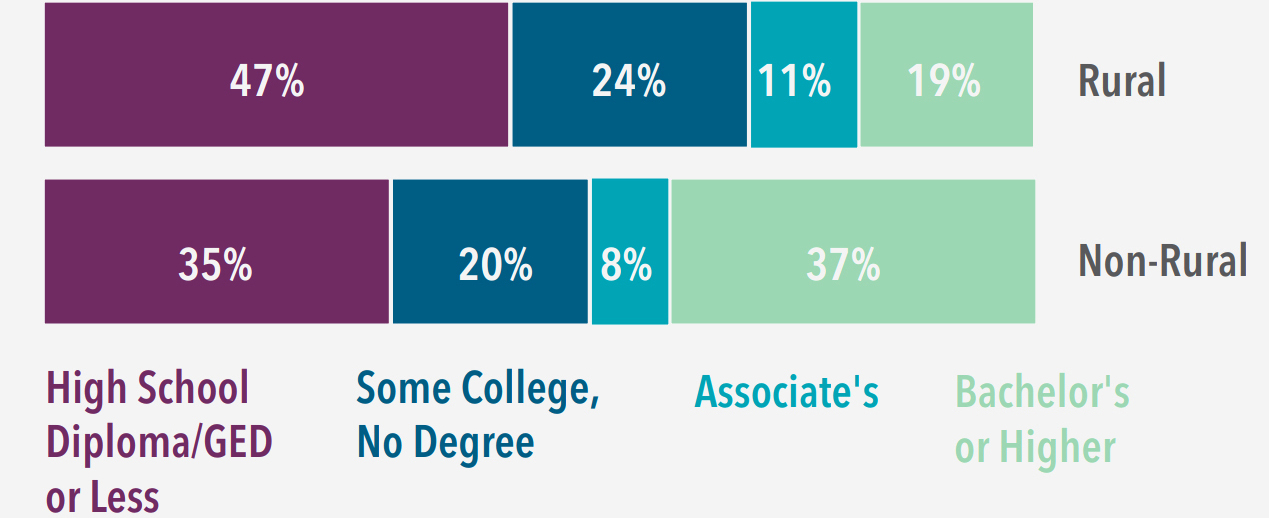Equity Gaps Facing Students from Rural Communities
EDUCATIONAL ATTAINMENT IN ILLINOIS (AGE 25+) BY RURALITY

Rural counties generally have smaller proportions of their working-age population with an associate degree or higher, as illustrated in the interactive maps on the IBHE website. Conversely, rural counties have higher proportions with a high school diploma or less and slightly higher proportions with some college, but no degree.
Rural students have greater access to dual credit, but significantly lower proportions have access to AP compared to students in non-rural high schools.
Sixteen percent of rural students (based on high school location) had access to dual credit programs, while only 10% of non-rural students did. However, only 7% of rural students had access to AP programs, while 27% of non-rural students did.
Rural high school students are less likely to go to college right after high school, and when they do, they are more likely to go to community colleges. The average college enrollment rate within 12-months of graduation for rural high schools was 65%, compared to 70.2% for high schools located in non-rural areas. For those that do enroll, 66% will go to a community college, compared to 47% of students from non-rural areas. The rate of enrollment at four-year institutions was lower among students from rural high schools (34% to 53%).
ENROLLMENT DATA FOR RURAL VS
NON-RURAL STUDENTS

While rural students are underrepresented among freshmen at Illinois public universities, institutions retain rural and non-rural freshmen at same rates. In fall of 2019-20, rural students represented approximately 7% of the freshmen at public universities and about 14% of transfer students. Institutions retained just under 80% of rural and non-rural freshmen and advanced rural freshmen at a greater rate than urban. However, rural transfer students are retained and advanced at lower rates than their non-rural counterparts.
Institutions retained just under 80% of rural and non-rural freshmen and advanced rural freshmen at a greater rate than urban. However, rural transfer students are retained and advanced at lower rates than their non-rural counterparts.5
_
5 The analysis in this section comes from data collected by IBHE. There are too few cohorts of data to report at
this time on completion comparing rural and non-rural students.